
With any production line, efficiency is the name of the game—and if you’re still relying on manual labor to feed containers, trays, or packaging materials into equipment, you’re likely dealing with slowdowns, higher labor costs, and unnecessary strain on your team.
Repetitive tasks like these don’t just eat up time; they also increase the risk of worker fatigue and human error, leading to inconsistent production and wasted resources.
That’s why incorporating automated packaging equipment, like feeders and denester machines, can make life easier. These systems take the manual work out of the equation by automatically separating and feeding containers, keeping everything moving smoothly without constant supervision.
With automation, you get higher throughput, lower labor costs, and a more efficient production flow—plus, your team benefits from a safer, more streamlined work environment. It’s a win-win for productivity and consistency.
Why Feeders and Denester Machines Are Essential for Packaging Efficiency
Feeders and tray denesters are designed to automate one of the most time-consuming tasks in packaging: feeding and positioning containers.
Instead of relying on workers to separate trays, position bottles, or stack items correctly, this equipment handles the process seamlessly, ensuring a steady flow of materials into the next stage of production.
Here are three ways they enhance efficiency:
- Hands-Free Operation: Once installed, feeders and denester machines work continuously, eliminating bottlenecks caused by manual feeding.
- Consistent Throughput: Automating this step ensures a steady, reliable pace—no slowdowns due to human fatigue or variation in manual handling speeds.
- Reduced Labor Dependency: Instead of assigning multiple workers to repetitive feeding tasks, companies can reallocate labor to higher-value tasks.
With these advantages, manufacturers can maintain production efficiency, cut costs, and minimize downtime, all while improving product uniformity and quality.
4 Big Benefits of Switching to Automated Feeders and Denesters
Manual feeding processes often create bottlenecks, increase labor costs, and introduce human error, all of which can slow down production and impact product quality. Automating with feeders and denester machines helps manufacturers streamline operations, reduce manual intervention, and maintain a steady production flow.

Here’s how this equipment can transform your packaging line.
1. Increased Throughput
Removing manual feeding bottlenecks allows for a smoother, faster, and more reliable production process. Automated packaging equipment, like feeders and tray denesters, work at a consistent pace, ensuring that materials move seamlessly through the line without unexpected slowdowns.
This results in higher output without requiring additional labor, helping manufacturers meet demand, reduce downtime, and optimize production capacity.
2. Reduced Labor Costs
Repetitive manual tasks don’t just slow down operations—they also increase labor costs and contribute to worker fatigue and turnover. With automation, manufacturers can reduce dependency on manual labor, reallocating employees to higher-value tasks that require skill and oversight.
Over time, this shift leads to significant cost savings, as companies spend less on labor-intensive operations while improving overall efficiency.
3. Improved Safety
Constantly handling and separating trays or containers puts physical strain on workers, increasing the risk of repetitive stress injuries and workplace fatigue. Automated feeders and denester machines eliminate the need for manual handling, creating a safer and more ergonomic work environment.
By reducing strain-related injuries, companies can improve worker well-being, lower healthcare costs, and enhance overall workplace morale.
4. Enhanced Product Quality
Inconsistent feeding can cause misaligned containers, labeling errors, and product damage, all of which can lead to waste and rework. Automated feeders and denesters deliver precise and accurate feeding, reducing the risk of jams or product misplacement.
With consistent product positioning and smoother transitions, manufacturers can maintain product integrity, reduce material waste, and enhance overall quality control.
How Feeders and Denesters Improve Packaging in Different Industries
Feeders and denester machines are valuable assets across a variety of industries, offering precision, speed, and consistency to packaging lines. This automated equipment takes the hassle out of manual feeding, helping manufacturers keep operations running smoothly, cut down on waste, and boost efficiency by automating the process of separating and feeding packaging materials.

Whether it's food trays, pharmaceutical bottles, personal care containers, or industrial components, feeders and denesters enhance workflow and product handling, making them an essential tool for businesses looking to scale their production.
Food and Beverage
In the food and beverage industry, speed and hygiene are crucial to maintaining product integrity and meeting high consumer demand. Feeders and denester machines play a vital role in:
- Separating trays for ready-to-eat meals, bakery items, and frozen foods. By automating the process, manufacturers ensure consistent spacing and alignment, reducing the risk of jams or product misplacement.
- Ensuring consistent feeding for bottles, cups, and cartons in beverage production. Proper placement prevents spills and misalignment, keeping operations running smoothly while maintaining product quality.
With food safety regulations tightening, precise feeding ensures compliance with hygiene standards by minimizing human contact and reducing contamination risks.
Pharmaceuticals
Pharmaceutical production requires precise handling to ensure that medications and vials are processed correctly. Feeders and tray denesters provide an extra layer of accuracy and efficiency, helping pharmaceutical companies:
- Handle blister packs, vials, and syringes with precision to prevent contamination and maintain sterility. Even slight misalignment in packaging can lead to costly rework or product recalls.
- Ensure consistent feeding of pill bottles and medication trays for labeling and packaging. With the pharmaceutical industry heavily regulated, automating the feeding process helps maintain compliance with FDA and GMP requirements.
By eliminating manual handling errors and reducing contamination risks, feeders and denester machines play a crucial role in ensuring the safety and accuracy of pharmaceutical packaging.
Personal Care
From cosmetics to skincare products, the personal care industry relies on uniform, attractive packaging to appeal to consumers. Automated feeders and denesters help manufacturers streamline packaging for various container shapes and sizes, including:
- Jars, tubes, and cosmetic packaging—automating feeding ensures that fragile packaging materials are handled carefully, reducing product damage.
- Lotions, shampoos, and skincare containers—feeding these items consistently allows for seamless labeling and filling, improving overall efficiency.
With personal care products often being small and irregularly shaped, automated packaging equipment keep production lines moving without slowdowns or misalignments.
Industrial & Consumer Goods
In the industrial and consumer goods sector, organization and consistency are essential for packaging hardware, tools, and electronics. Feeders and tray denesters provide structured, efficient feeding solutions by:
- Managing packaging for hardware, tools, and small electronic components. Automating the feeding process ensures that parts are aligned correctly and positioned securely, reducing assembly time and improving order fulfillment.
- Separating and feeding plastic or metal trays for organized packaging. This allows precision stacking, wrapping, and labeling, making shipments more secure and reducing material waste.
By automating these repetitive tasks, industrial and consumer goods manufacturers increase productivity, lower costs, and improve packaging consistency across different product lines.
4 Key Factors to Help You Choose the Best Feeder or Denester
Investing in the right feeder or denester machine can make a significant difference in your packaging efficiency, production speed, and overall operational costs.
However, with different equipment types available, you must be careful to select the best one for your specific needs. The right system should seamlessly integrate into your existing line, support your product types, and offer the flexibility needed for future growth.
Here are 4 key factors to consider when choosing a feeder or denester for your packaging process:

1. Container Type
Whether you’re working with rigid trays, flexible plastic containers, or bottles, your equipment must be compatible with the materials used in your production line. Certain materials, like thin plastic trays, require delicate handling, while heavier items need equipment with greater stability and precision.
2. Production Volume
If your operation runs at high speeds, your equipment must keep up without creating bottlenecks. A feeder or denester machine that can handle consistent, rapid output will help maintain efficiency and reduce downtime.
3. Integration With Existing Equipment
Your feeder or denester must sync with other equipment in your line, such as labelers, fillers, and capping machines, to maintain a smooth, uninterrupted workflow. With automation keeping everything in sync, you get precise, consistent movement, reducing the risk of jams and misaligned products.
4. Customization Needs
Some packaging lines require multi-functional equipment that can adjust for different container sizes and styles. Investing in a versatile feeder or tray denester ensures adaptability as your production demands evolve.
Keep Your Feeder and Denester Running Like New
Like any automated packaging equipment, regular maintenance is crucial to keeping feeders and denester machines running at peak efficiency. Follow these best practices to maximize performance:
- Keep It Clean: Regularly remove dust, debris, and product residue to prevent buildup that could impact equipment performance.
- Inspect Mechanical Components: Check sensors, belts, and moving parts for wear and tear to avoid unexpected breakdowns.
- Train Operators: Ensure staff understand proper operation, troubleshooting, and safety procedures to maintain efficiency.
Well-maintained equipment extends the lifespan, prevents costly downtime, and ensures consistent production quality.
It’s Time to Automate Your Packaging Process
Manually feeding containers and trays can slow production, increase costs, and create inconsistencies in the packaging process. By implementing feeders and denester machines, manufacturers can eliminate repetitive tasks, improve efficiency, and reduce labor dependency.
With the right automated solution, you’ll see higher throughput, fewer errors, and a safer work environment—all while maintaining product quality.
Ready to automate your packaging line? Reach out to Pack Leader USA to schedule a free consultation and explore the best automated packaging equipment for your production needs.
.webp?width=200&height=114&name=2x-Packleader-logo-large%20(1).webp)

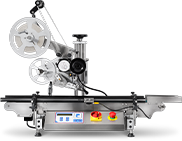
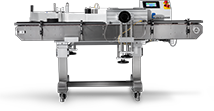
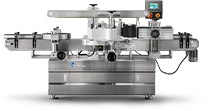
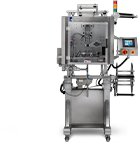
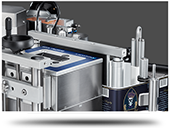
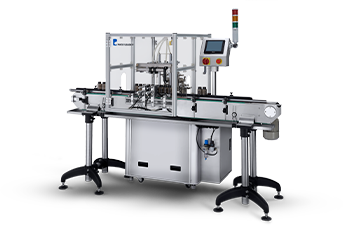
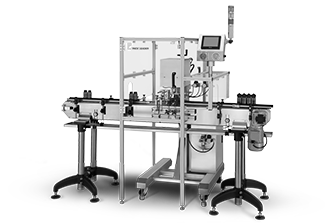
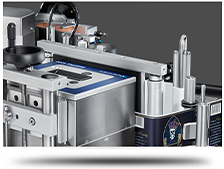





.webp?width=360&name=2x-color-logo%20(1).webp)